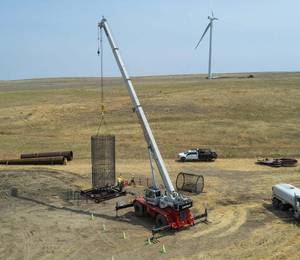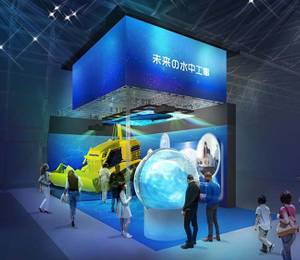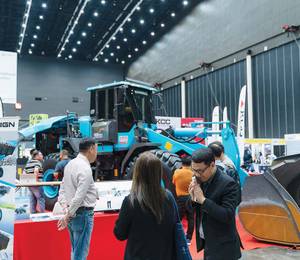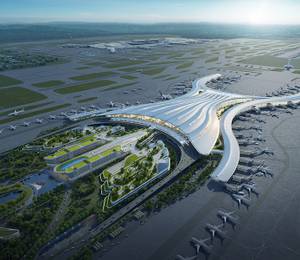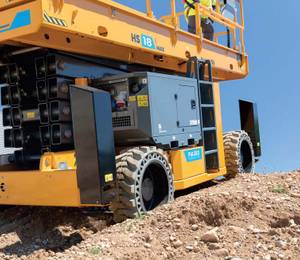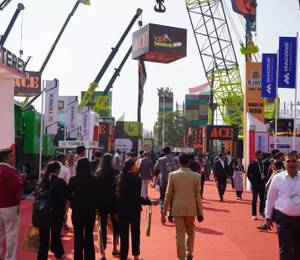Construction of the Urban Rail Transit Line 1 in the city of Shaoxing, China, is still ongoing. It is deemed the largest infrastructure project in the city’s history and is of great significance due to its part in linking the cities of Hangzhou and its Metro Line 5, with Shaoxing via the Hangzhou-Shaoxing Intercity Railway.
Shaoxing Rail Transit Group entrusted Powerchina Huadong Engineering Corporation Limited (HDEC) to digitally engineer the entire Line 1 - including project management, overall consultation, survey, design, construction, and handover to operations and maintenance - at approximately CNY 24 billion.
However, HDEC required software that would help streamline this complex project. Work on the 34.1-km line is mainly underground and includes 24 stations, 25 sections, one depot, a parking lot, two main substations, and a control centre. Construction commenced in 2017 and is expected to take 54 months to complete, with operations estimated to start in 2022.
Challenges
HDEC needed to overcome the issues of limited underground space and complex environmental conditions, numerous technical interfaces between the multiple disciplines involved during design and construction, and governmental cooperation between departments and units from the cities of Hangzhou and Shaoxing.
Complex hydrogeological conditions along the line’s corridor were a problem as well, where soft soil is relatively thick. This means that HDEC had to pay particular attention to the safety of foundation pits, long-term settlement, and water leakage during design and construction.
HDEC also needed software to help overcome significant project planning and traffic organisation challenges. The existing infrastructure conditions were complex because the railway passes through Shaoxing’s old town, featuring narrow roads with large traffic flows, river courses, 26 bridges, two railways, and cultural and historical protection zones.
Due to Shaoxing Rail Transit Line 1’s dual-function of serving commuter passengers within the city and connecting with the city of Hangzhou via the Hangzhou-Shaoxing inter-city line, technology standards and interface protocols - such as vehicle selection, operation organisation, power supply division, communication networks, and signal systems - needed to cover the entire line.
Digital workflows
With tight deadlines and a high level of complexity on the project, HDEC realised that it was critical to consider ways of improving both the efficiency and quality of design, construction, commissioning, and handover of the rail line to operations.
HDEC knew that its previous, traditional IT consulting processes would not be enough. Thus, the company decided to adopt advanced digital workflows and a digital twins approach, applying Bentley’s open and collaborative design applications plus iTwin technology on the project.
At the outset, HDEC leveraged aerial photography within ContextCapture to create a 3D reality mesh that truly reflected the existing conditions of the city’s landscape, architecture, and road network.
HDEC developed its own 3D geology software called GeoStation based on Bentley technology, using it along with the subsurface utility engineering functionality within OpenRoads to create an integrated BIM model of the railway’s route. The company was able to leverage the insight that it gained for many tasks, including the complex design and engineering of subway crossings, as well as modelling of existing sub-surface pipelines.
Where the railway line passes through or is adjacent to key buildings and structures, HDEC used Bentley’s iModel technology to integrate BIM models created by each of the many different disciplines involved, often including data generated by other non-Bentley software.
During construction, Bentley’s iTwin technology enabled HDEC to consume dynamic and static data in its digital construction management platform. Allowing each participating unit to contribute to and collaborate on a unified 3D view meant that HDEC could improve many construction management activities, including component-level project schedule management, quality management, safety management, and cost management.
“To improve the information and digital management for this project, we deployed Bentley’s 3D design, engineering, and collaboration platform,” explained Yexing Zhang, executive general manager of Zhejiang Huadong Engineering Digital Technology Co Ltd, Powerchina Huadong Engineering Corporation Limited.
“This innovative approach, which included the use of Bentley’s open applications, a connected data environment, and iTwin technology, meant that we had greater control of all elements within the project, and is helping ensure that our high-quality design transfers to a greater standard of construction and will ultimately result in improved levels of operation upon the railway’s completion.”
‘Shorter cycle and cost-saving’
Integrating survey, geology, and pipeline models, along with the 3D design of the railway planning models, reduced more than 800 hours of field data collection time in the areas of site survey, and geological and pipeline exploration, saving an investment of over CNY 3 million in resource hours.
The ability to manage urban spatial data and planning data of the subway’s surroundings in a single unified environment helped HDEC complete route exploration, station location, and civil construction planning in ways that reduced the impact of subway construction on the citizens of Shaoxing.
Combining BIM data with automated monitoring technology means the impact of construction on the surrounding environment can be analysed in real time. To date, the team has dealt with over 100 abnormal data events that previously could have negatively impacted construction or the cultural heritage of the city.
The use of digital workflows during the design phase has resulted in the removal of many traditional processes altogether, enabling design productivity across disciplines to increase by a factor of two, as well as design review efficiency by a factor of three.
Adopting digital workflows during drawing production, HDEC eliminated many low-level problems, and produced higher quality deliverables, and shortened the entire cycle by 20%, resulting in a saving of CNY 10 million.
By implementing real-time analysis, processing of data from multiple sources - including BIM, GIS, big data, and the Internet of Things (IoT) - and leveraging cloud computing, artificial intelligence (AI) augmented and virtual reality (AR and VR) in a connected data environment, HDEC is realising the full value and potential of its data to support improved decision-making across its business.
Moreover, with the seamless transfer of digital assets throughout the entire process, HDEC is laying solid foundation for a digital twin of the railway to be used in the latter stages of project delivery, and onward into operations and maintenance.
Images: Powerchina Huadong Engineering Corporation Limited
Note: HDEC has been named a winner at Bentley’s Year in Infrastructure (YII) 2020 Awards (in the Rail and Transit category).
